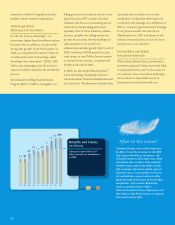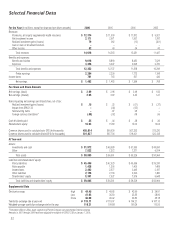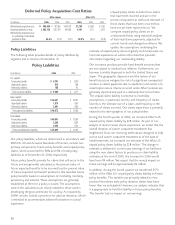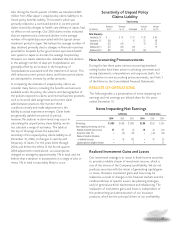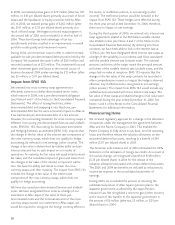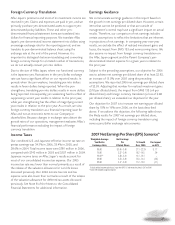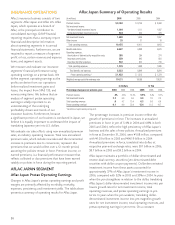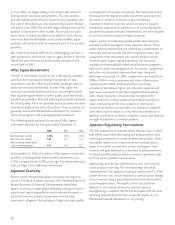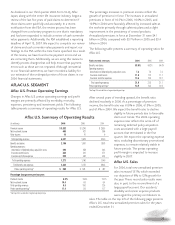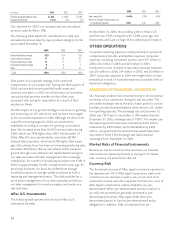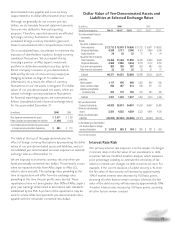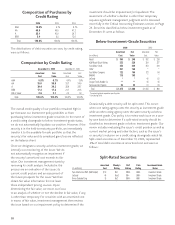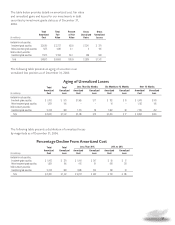Aflac 2006 Annual Report Download - page 33
Download and view the complete annual report
Please find page 33 of the 2006 Aflac annual report below. You can navigate through the pages in the report by either clicking on the pages listed below, or by using the keyword search tool below to find specific information within the annual report.
29
Foreign Currency Translation
Aflac Japan’s premiums and most of its investment income are
received in yen. Claims and expenses are paid in yen, and we
primarily purchase yen-denominated assets to support yen-
denominated policy liabilities. These and other yen-
denominated financial statement items are translated into
dollars for financial reporting purposes. We translate Aflac
Japan’s yen-denominated income statement into dollars using
an average exchange rate for the reporting period, and we
translate its yen-denominated balance sheet using the
exchange rate at the end of the period. However, it is
important to distinguish between translating and converting
foreign currency. Except for a limited number of transactions,
we do not actually convert yen into dollars.
Due to the size of Aflac Japan, where our functional currency
is the Japanese yen, fluctuations in the yen/dollar exchange
rate can have a significant effect on our reported results. In
periods when the yen weakens, translating yen into dollars
results in fewer dollars being reported. When the yen
strengthens, translating yen into dollars results in more dollars
being reported. Consequently, yen weakening has the effect of
suppressing current year results in relation to the prior year,
while yen strengthening has the effect of magnifying current
year results in relation to the prior year. As a result, we view
foreign currency translation as a financial reporting issue for
Aflac and not an economic event to our Company or
shareholders. Because changes in exchange rates distort the
growth rates of our operations, management evaluates Aflac’s
financial performance excluding the impact of foreign
currency translation.
Income Taxes
Our combined U.S. and Japanese effective income tax rate on
pretax earnings was 34.5% in 2006, 33.4% in 2005, and
28.6% in 2004. Total income taxes were $781 million in 2006,
compared with $743 million in 2005 and $507 million in 2004.
Japanese income taxes on Aflac Japan’s results account for
most of our consolidated income tax expense. Our 2005
income tax rate was lower than normal primarily as a result of
the release of the valuation allowance for non-life losses
discussed previously. Our 2004 income tax rate and tax
expense were also lower than normal as a result of the release
of the valuation allowance for deferred tax assets discussed
previously. See Note 8 of the Notes to the Consolidated
Financial Statements for additional information.
Earnings Guidance
We communicate earnings guidance in this report based on
the growth in net earnings per diluted share. However, certain
items that cannot be predicted or that are outside of
management’s control may have a significant impact on actual
results. Therefore, our comparison of net earnings includes
certain assumptions to reflect the limitations that are inherent
in projections of net earnings. In comparing year-over-year
results, we exclude the effect of realized investment gains and
losses, the impact from SFAS 133 and nonrecurring items. We
also assume no impact from foreign currency translation on
the Aflac Japan segment and the Parent Company’s yen-
denominated interest expense for a given year in relation to
the prior year.
Subject to the preceding assumptions, our objective for 2006
was to achieve net earnings per diluted share of at least $2.92,
an increase of 15.0% over 2005 using the preceding
assumptions. We reported 2006 net earnings per diluted share
of $2.95. Adjusting that number for realized investment gains
($.10 per diluted share), the impact from SFAS 133 (nil per
diluted share) and foreign currency translation (a loss of $.08
per diluted share), we exceeded our objective for the year.
Our objective for 2007 is to increase net earnings per diluted
share by 15% to 16% over 2006, on the basis described
above. If we achieve this objective, the following table shows
the likely results for 2007 net earnings per diluted share,
including the impact of foreign currency translation using
various yen/dollar exchange rate scenarios.
2007 Net Earnings Per Share (EPS) Scenarios*
Weighted-Average Net Earnings
Yen/Dollar Per % Growth Yen Impact
Exchange Rate Diluted Share Over 2006 on EPS
105.00 $ 3.45 - 3.48 21.1 - 22.1% $ .17
110.00 3.37 - 3.40 18.2 - 19.3 .09
116.31** 3.28 - 3.31 15.1 - 16.1 –
120.00 3.23 - 3.26 13.3 - 14.4 (.05)
125.00 3.17 - 3.20 11.2 - 12.3 (.11)
*Excludes realized investment gains/losses, impact from SFAS 133 and nonrecurring items in 2007 and 2006
**Actual 2006 weighted-average exchange rate



